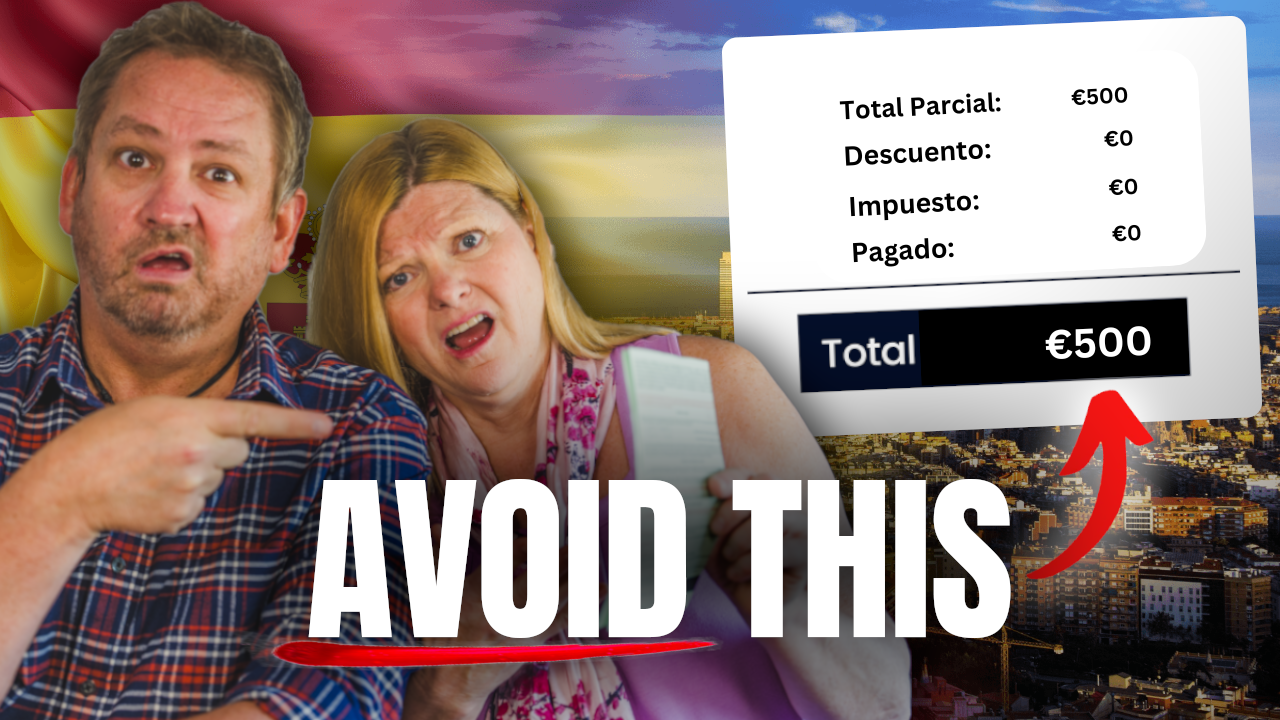Need to navigate the vibrant Spanish landscape at your leisure? Renting a car is the key. Our guide delivers straightforward steps on how to rent a car in Spain, from must-know legal requirements to picking the right model for your trip. We’ll arm you with practical tips to ensure a hassle-free rental experience so you can hit the road and enjoy Spain’s iconic destinations in no time.
We have used rental cars in Spain for years and have driven through this country from Barcelona and San Sebastian in the north to the border of Gibraltar in the South. We have made mistakes in the past and have even received a $500 bill from the rental company after returning home. On our most recent trip to Spain, we rented a car and made sure not to make the same mistakes twice. This is all the information and guidelines that we use to rent a car in Spain.
Table of Contents
Setting the Wheels in Motion: Starting Your Car Rental Journey in Spain

Renting a car in Spain is like unlocking the door to a treasure chest of experiences. It gives you the freedom to venture into hidden gems that are off the beaten path, and it’s a fantastic way to immerse yourself in the local culture. Plus, there’s the added comfort and safety of having your own space. Picture yourself driving through Spain’s diverse landscapes, from the rolling hills dotted with historic sites to the breathtaking views of World Heritage Sites—it’s an opportunity for discovery that’s hard to pass up.
Exploring Northern Spain, especially the historic Camino de Santiago routes, by rental car adds a unique adventure to your journey.
Choosing the Perfect Rental Car
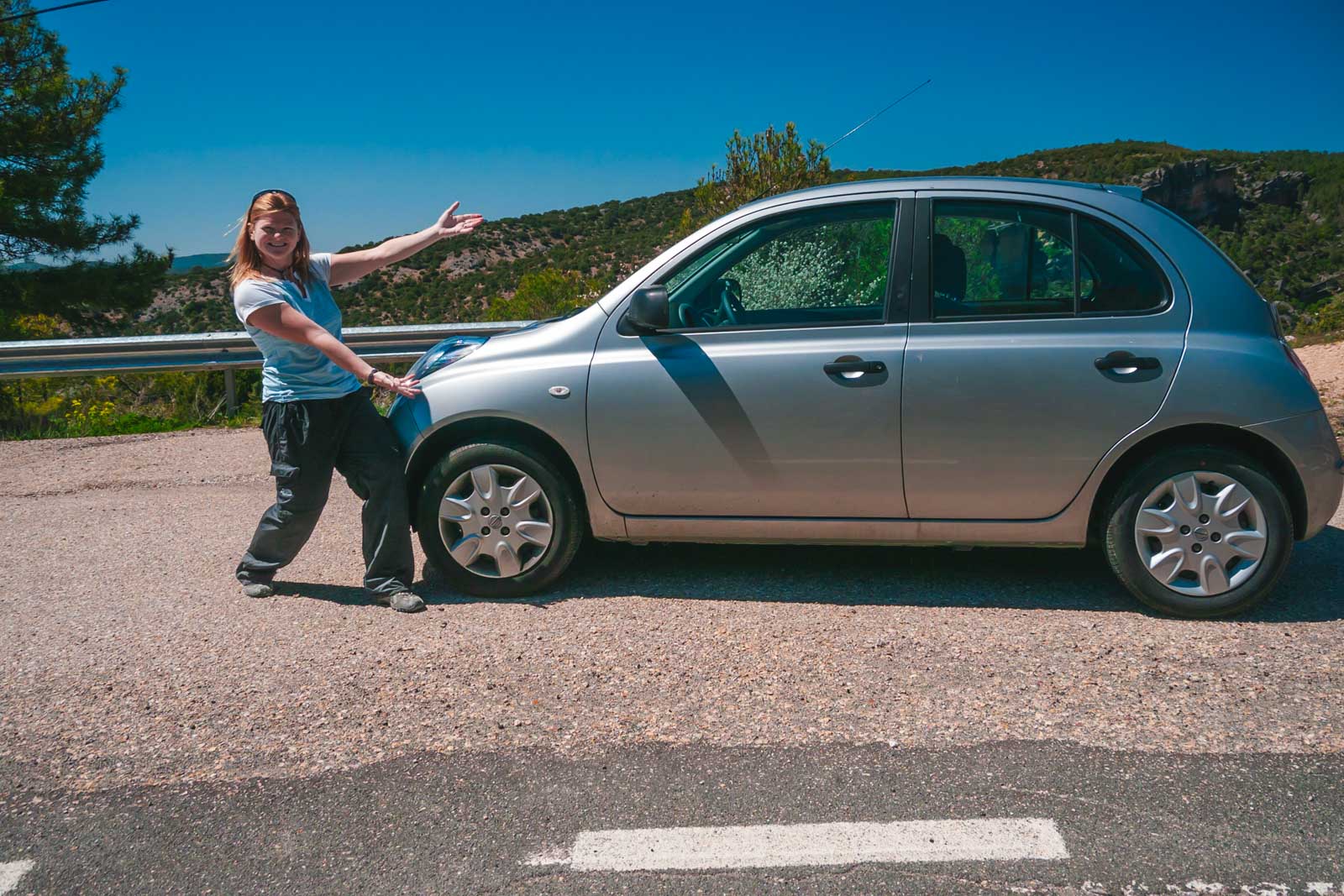
Selecting the right type of vehicle for your planned itinerary is crucial, especially for efficiently navigating busy cities or mountainous regions of Spain. So, what size car should you rent? Obviously, small cars will be cheaper and use less gas. Petrol prices in Europe are more expensive than in the States and, yes, even Canada. We rent small cars not only for gas savings but also for ease of parking and going through narrow roads.
If you don’t drive stick, make sure to book months in advance as they sell out quickly. The most affordable option in Spain is to rent a standard transmission. Plus, it’s way more fun.
Before you lock in that rental, take a moment to glance over the rental terms. Keep an eye out for how they handle mileage, what their fuel policy is, if there are any age limits that might affect you, and what they’ll charge for adding another driver. Additionally, consider the requirements and tips for car rentals, such as age restrictions, necessary documents like a valid driver’s license and possibly an International Driving Permit, advance reservations, options for one-way rentals, international travel policies, and additional fees for drivers under 25 years old.
Understanding Car Rental Deals
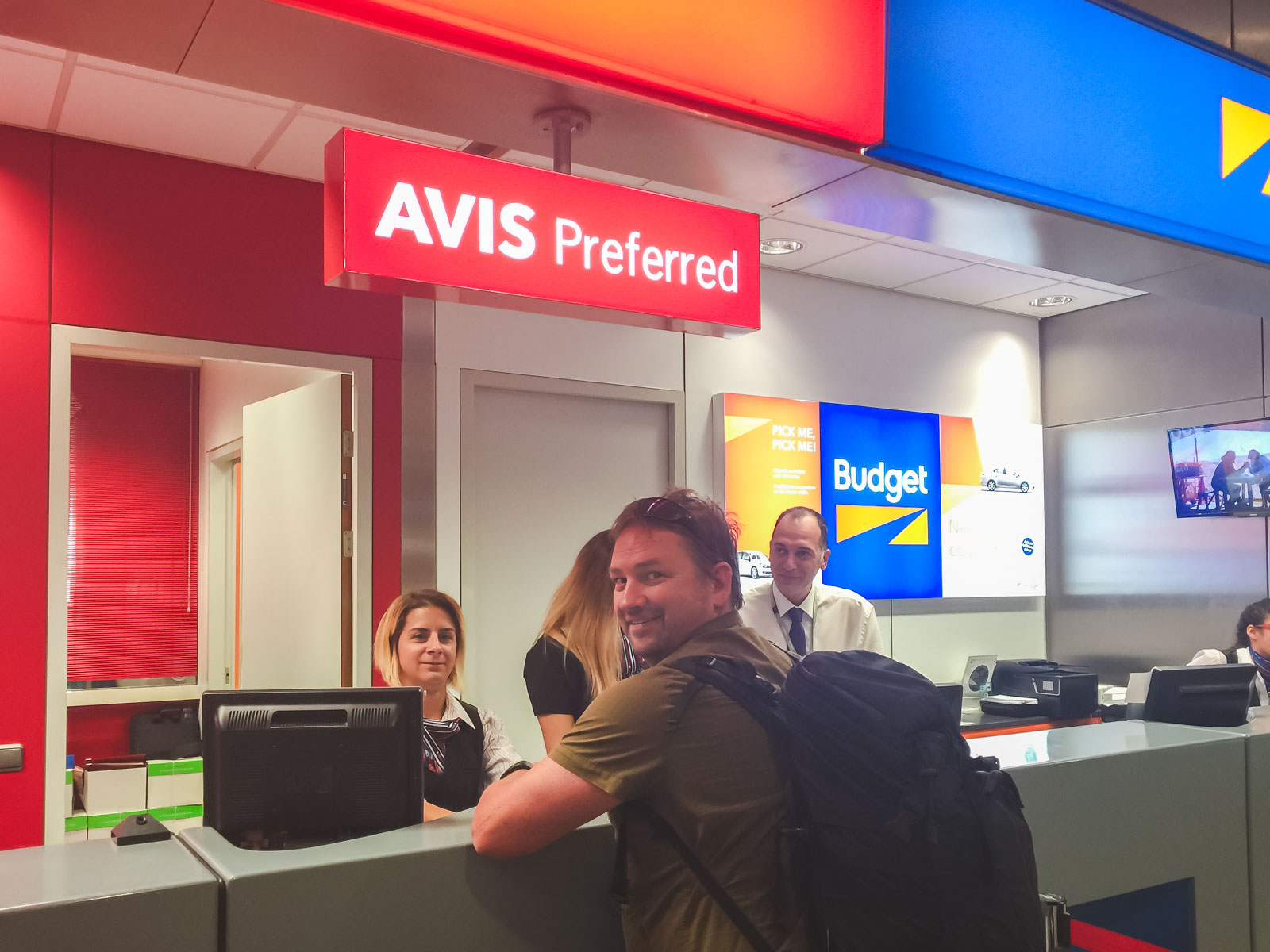
To increase the likelihood of getting a good deal and guarantee the availability of the car you actually want, you should make sure to book well in advance of your trip. Of course, this is what we suggest with everything related to travel these days. The further in advance you book, the better the deals are usually. With fierce competition among car rental companies in Spain, you’re likely to find good deals regardless.
Websites like RentalCars.com and Booking.com are great platforms to compare prices and find the best car rental deals among the best car rental companies. Remember, the early bird catches the worm – or, in this case, the best car rental deals from your chosen rental car company!
Navigating the Requirements: Eligibility and Documentation

Before you head out on the Spanish roads, it’s crucial to understand the eligibility requirements for renting a car in Spain. Here are the key requirements:
- Minimum age: Typically 21, but some companies set higher age limits of 23 or over.
- Documents needed: Valid driver’s license, passport, and credit card are required in the name of the primary driver.
- Additional proof of address: Some car rental companies might ask for additional proof of address besides the driving license, identity card, or passport.
For non-EU citizens, including those from the US and Canada, an International Driver’s Permit (IDP) is necessary alongside their valid driver’s license when renting a car in Spain. We put this in here, but we have never needed an IDP in Spain (or they have never checked). Just make sure to confirm with the rental company before you get there.
The Age Factor: Minimum Age and Additional Fees
While the legal driving age in Spain is 18, the minimum age requirement for renting a car in Spain is 21 years. But don’t celebrate just yet if you’re under 25! Drivers under 25 years old are subject to an additional young driver surcharge when renting a car. This fee can significantly increase the overall cost of the car rental.
So, if you’re a young driver eager to hit the Spanish roads, be prepared for this extra cost.
Insurance Considerations
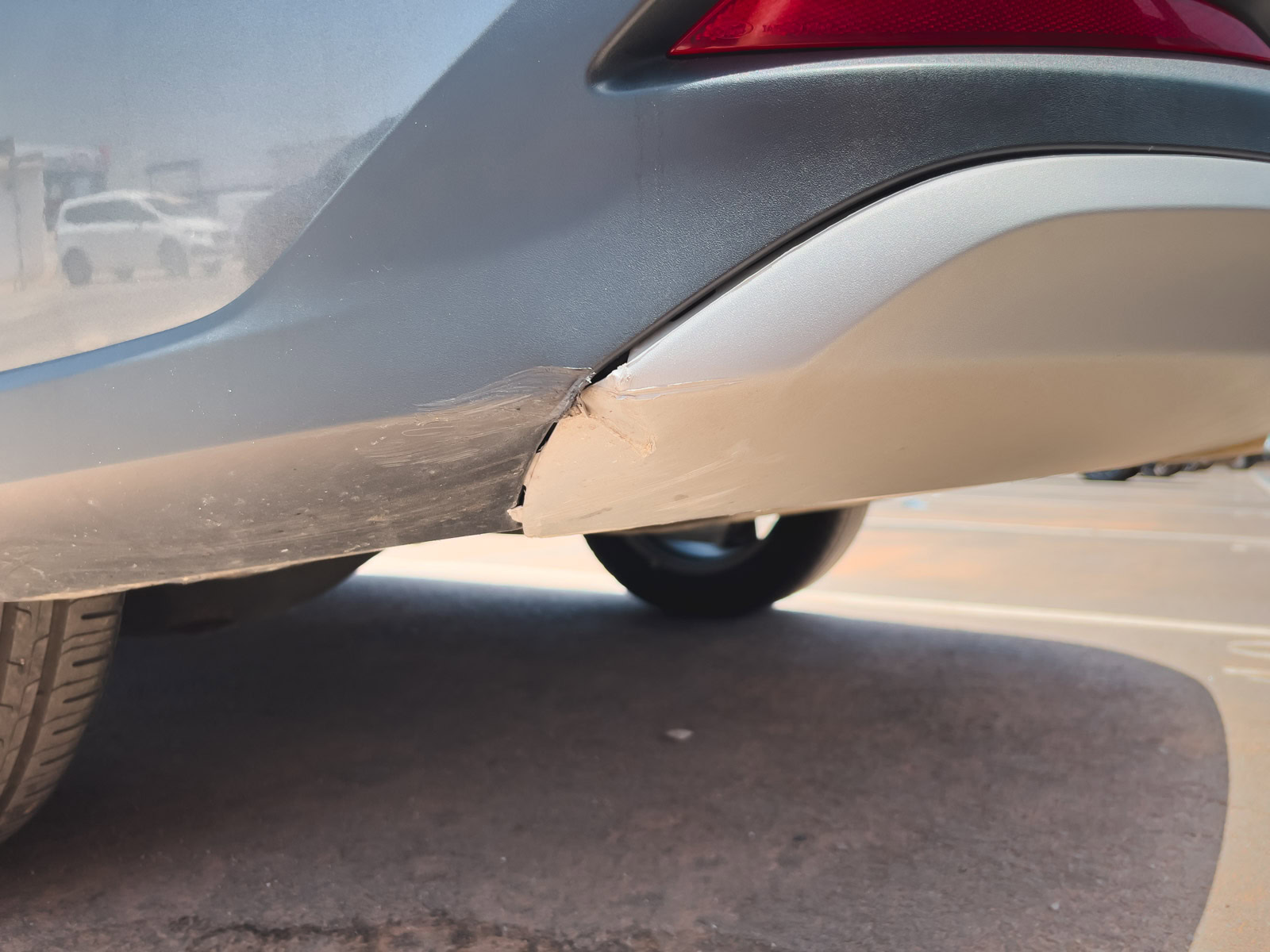
Insurance coverage is a crucial aspect of renting a car and a mandatory one. This is obviously one of the more confusing things to navigate when renting a car, as some things change depending on who you are using for your insurance, what car rental company you are using, and if you are using your Credit Card for insurance. We actually have a great video that goes over all of these to make it easier to understand the details.
Should I use my Credit Card For insurance?
This is obviously a personal choice, but before you decide to use it because it is “included with your credit card,” make sure to do some research first. All credit cards are different, and you will want to call your credit card company to see what they cover. You don’t want to get stuck later on, finding out you didn’t meet the eligibility criteria.
CDW or Collision Damage is usually covered, but not liability. Luckily, if you rent a car in Spain, liability insurance is mandatory, and this is included in the rental cost.
We use American Express Platinum, which has excellent coverage. However, it is important to note that when you book the rental, it has to be in the name of the cardholder, and that person has to be the primary driver. If it is not, then you may not be covered.
Should I use the Car Rental Company insurance?
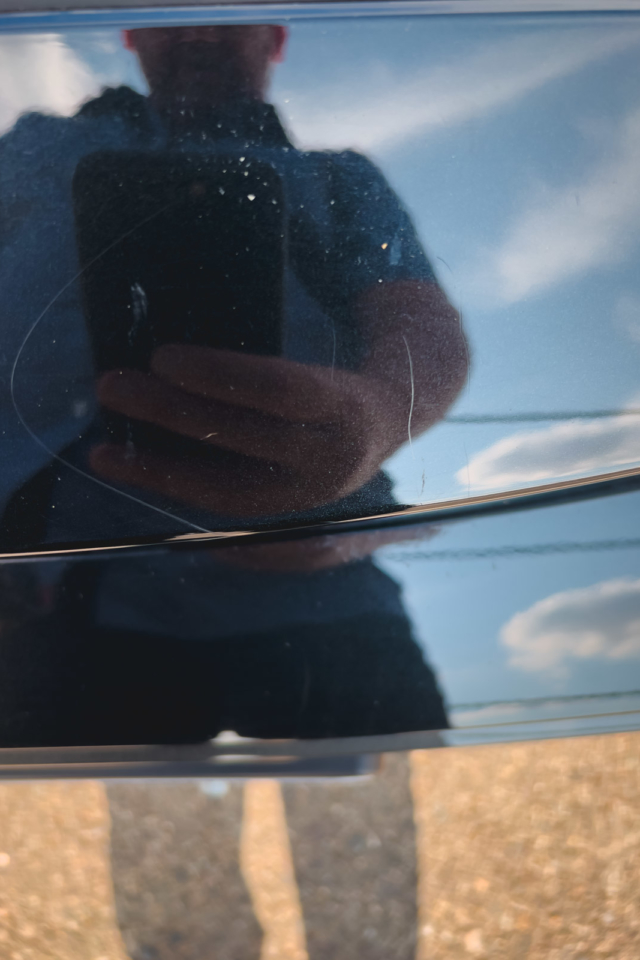
If it’s not too expensive, we like to purchase the full coverage from the rental company; however, during our last visit to Spain, they charged €25 Euro a day, which ended up being more than the cost of our rental. So we decided against it and used a third party. We recommend checking out sites like rentalcars.com or booking.com for better insurance deals.
You can also buy your insurance at the counter when you pick up the car – But watch out! When you get to the rental counter, they are very pushy and will try to tell you the one you purchased doesn’t work or that your credit card won’t work, which, in our experience, is false; they do. This is where they make their money and this is where you need to have done your research beforehand so you can feel confident turning them down.
When you rent a car in Spain, if you use the rental company’s insurance, know that it usually does not include crossing borders. That being said, you can usually take it into Portugal, France, or Gibraltar, but if you plan on this, make sure to double-check with them that you will be covered. Some smaller companies charge extra for this. It is usually in the agreement.
If you do have damage and have outside insurance, make sure to gather all the paperwork that you need. It will be impossible to get your money back from your insurance company if you don’t have any proof or reference. Get it all down in writing.
Lastly, the repositioning fee can be astronomical if you don’t return the car to the same country.
Picking Up Your Ride: Collection and Inspection Protocols
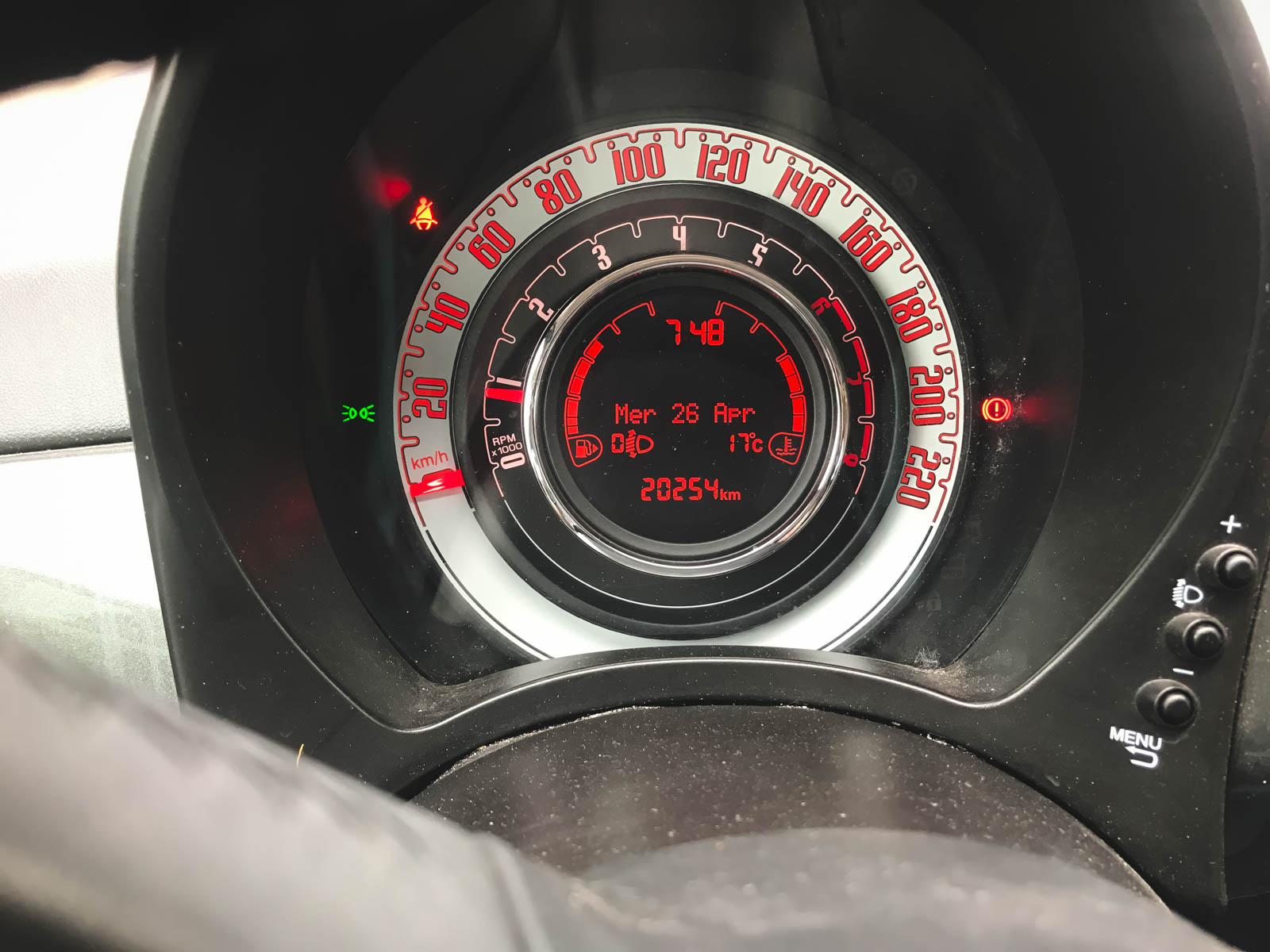
When you’re ready to hit the road, there are a few things to keep in mind. To protect yourself from any false damage claims, we highly recommend taking a video of your car’s condition during the initial walk-around. Unlike some places, there is no formal check-out inspection when you return the car.
Rental cars sometimes are not in great condition, and they might even try to pin damage on you, so having your own backup video and photos is the perfect proof. These are time-stamped.
It is not like North America, where they walk around the car with you, and you go over the damage to confirm everything before you leave. In Spain, they give you the keys to your car, have a list of damages, and expect you to sign off on that sight unseen.
Usually, if we find any additional damage, we will go back in and tell them to add it to the paperwork, especially if it is a major scratch or dent.
Airport Locations vs. Urban Areas: Where to Collect
Whether you’re collecting your rental car from an airport location or an urban rental spot can make a significant difference. Renting a car at an airport in Spain offers the following advantages:
- A more straightforward and cost-effective process
- A diverse array of vehicles
- Favorable rates
- Greater vehicle availability through advanced booking
Plus, the convenience of picking up a rental car right after landing is an added benefit. Major airports like Barcelona El Prat Airport and Madrid Barajas Airport are popular for their convenience and competitive rates.
On the Road: Understanding Spanish Driving Laws and Etiquette

Once you’re behind the wheel, it’s critical to understand Spanish driving laws and etiquette to ensure a safe and enjoyable journey. From mandatory safety belts for all vehicle occupants to the prohibition of using mobile phones without a hands-free device, Spain takes road safety seriously. Some important driving laws and etiquette in Spain include:
- Overtaking must be done on the left side of the other vehicle
- Wearing helmets is obligatory for riders of motorbikes, mopeds, and bicycles
- Spain enforces strict blood alcohol level limits to prevent drinking and driving offenses
- Be mindful of where and when you use your horn to avoid fines
Speed Limit Savvy: Staying Within the Law
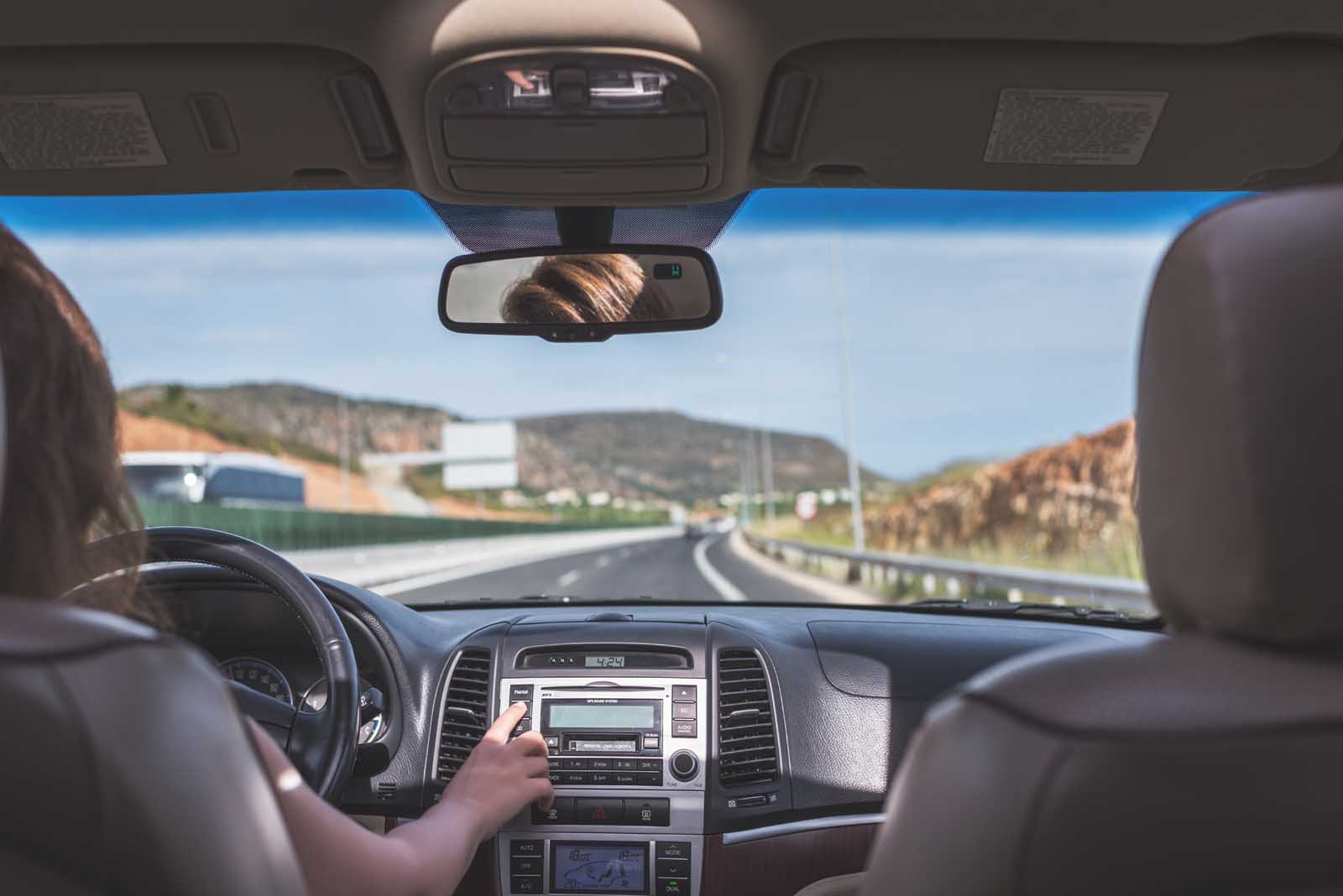
In Spain, speed limits vary based on the type and location of the road. On dual carriageways and motorways, the maximum speed limit is set at 120 km/h. The speed limit typically decreases to 90 km/h on roads not classified as dual carriageways or motorways.
Within built-up areas, such as towns or cities, the speed limit is further reduced to a standard 30 km/h. Luckily, all rental cars in Spain display the posted speed limit on their speedometer, so you can keep an eye on how fast you are going. Trust me, it is easy to get a ticket as the speed limits change often, and there is a lot of photo radar.
Mountain and coastal roads can be very narrow and full of curves, so if you plan to drive a lot, make sure you are comfortable with different road conditions. We have driven from England to Mongolia and everywhere in between and feel comfortable driving narrow roads, but our comfort level is much higher than others.
Toll Roads and Tunnels: Planning Your Route
Planning your route is a key part of a great road trip in Spain, and that includes understanding the concept of toll roads and tunnels. In Spain, as we said above, there are two main types of motorways: autovias, which are generally untolled, and autopistas, which require the payment of tolls. Toll payments can range from as little as €5 to up to €30, depending on the journey.
You can make toll payments using cash or credit card, and for added convenience, drivers can use the electronic toll collection system Via-T. They actually make it quite easy.
Fueling Your Journey: Gas Stations and Fuel Types
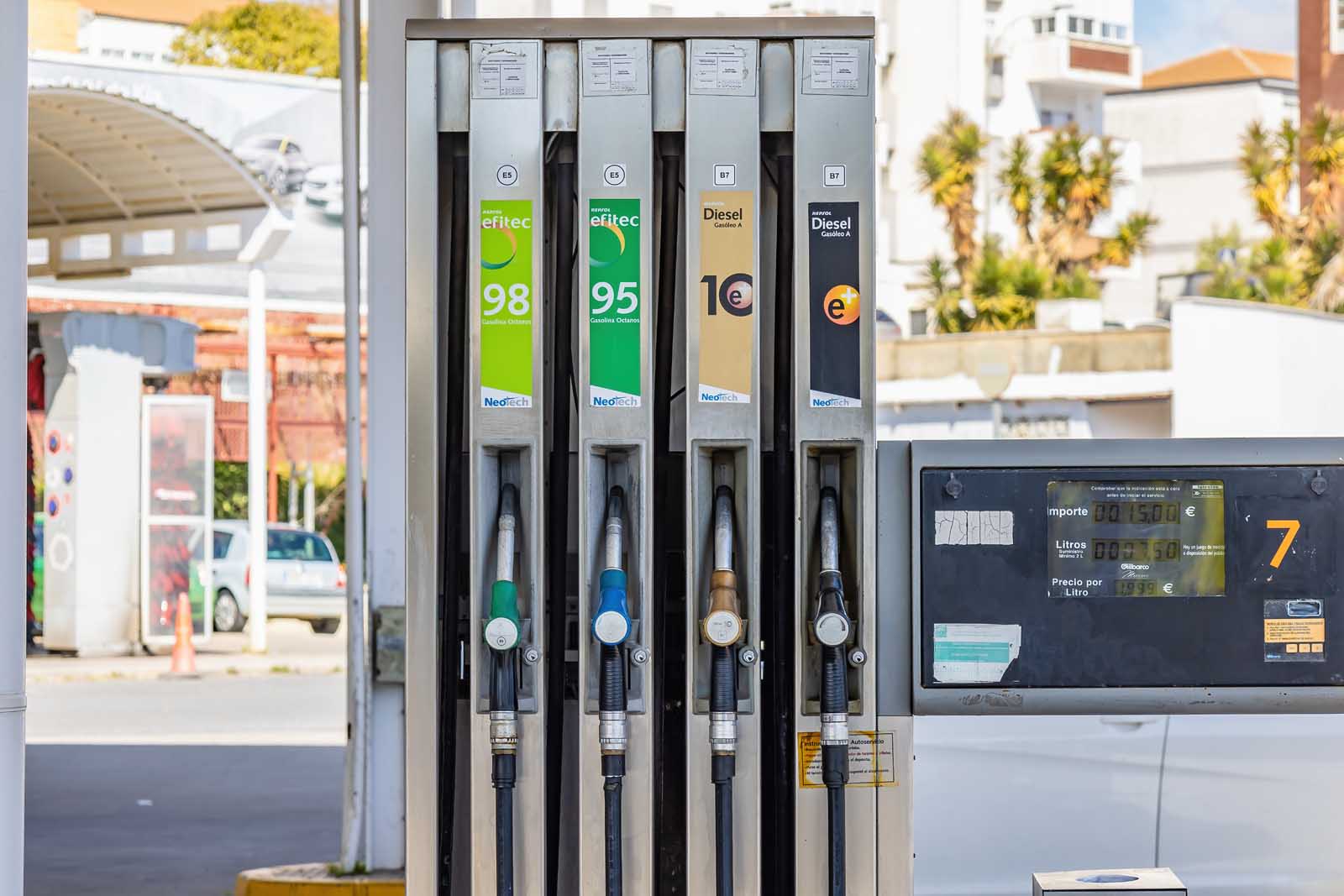
As you travel through Spain, you’ll need to keep an eye on your fuel gauge. In Spain, you have the option to fuel your rental car with diesel (labeled as ‘diesel’) or with unleaded petrol (labeled as ‘gasolina’), available in three types: E5, E10, or E85. Gas stations in Spain may be unattended during Sundays, holidays, lunchtime siestas, or late at night. It is important to take this into consideration when planning your trip.
The average price of gas in Spain is around 1.90 EUR per liter, and when returning a rental car, ensure the tank is full to avoid additional charges.
Most Gas Stations: A Guide to Refueling
While on the road, knowing how to refuel at self-service gas stations is crucial. At these stations, customers are expected to manage refueling their vehicles on their own. During the daytime, you can refuel at self-service stations and pay afterwards, but you may need to pre-pay or leave a credit card with the cashier before filling up.
At night, it’s often required to pay before using the services at a gas station. Most gas stations in Spain accept either cash or credit cards for payment. To ensure a smooth return of your rental vehicle, plan in advance by locating gas stations near your drop-off location and keeping the final gas receipt as proof of refueling.
Diesel or Petrol: Making the Right Choice
When it comes to choosing between diesel and petrol, diesel vehicles are often seen as a cost-effective option due to lower fuel prices and better fuel economy of diesel engines. Rental car companies in Spain may offer a limited selection of diesel cars to cater to budget-conscious customers.
So, if you’re planning a long road trip through Spain, a diesel car might be the right vehicle for you.
Parking Smarts: Where to Leave Your Car in Spain
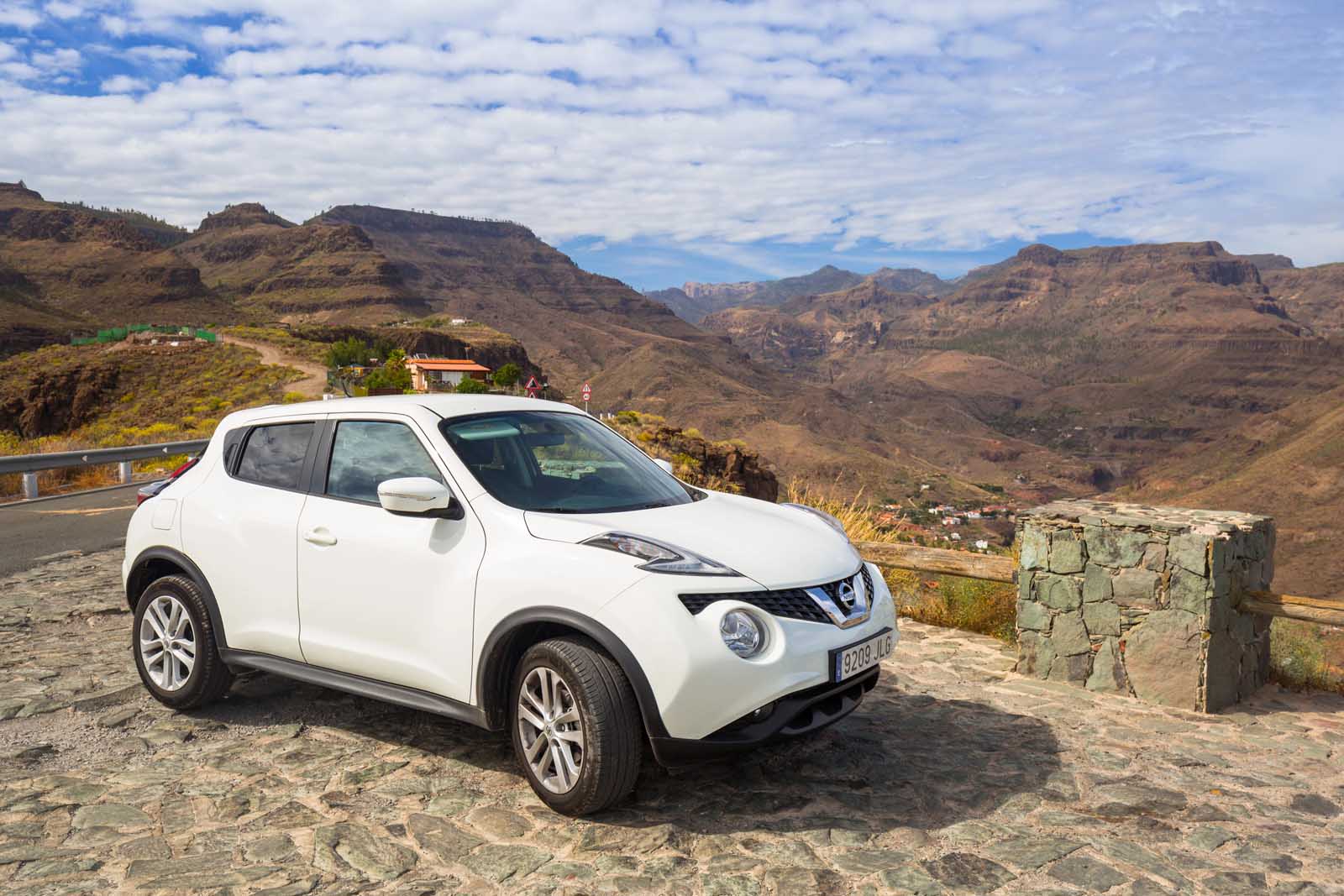
Navigating the parking rules in Spain can be a bit tricky. Here are some tips to help you.
Parking on the streets of Spain is often subject to local payment and regulations, which can vary based on location, time of day, day of the week, and whether the date is odd or even. In larger cities, drivers can use underground parking lots, which are easy to find using Google Maps.
Parking tips for driving in smaller towns and villages:
- Park on the edge of town to avoid maneuvering through narrow, one-way streets in the centers.
- If your rental car is towed, a sticker indicating the location of the car will usually be left.
- Drivers are responsible for paying the fine and towing charges at the designated locations.
Urban Parking Tactics: Avoiding Fines and Theft
In urban areas and major cities, where parking spaces are in high demand, you might want to park outside of the city center and take public transport. As always it’s important to follow certain tactics to avoid fines and vehicle break-ins. Keep any electronic devices, chargers, and other valuables out of sight and you even may want to remove any rental stickers to deter potential thieves.
Exploring Historic Centers: Parking Considerations
When visiting historic town centers in Spain, parking can be quite challenging due to narrow streets and restricted access, primarily for residents or permit holders. In these cases, you should definitely park outside the town or city center and consider using public transportation to reach historical areas.
Enhancing Your Experience: Extras and Add-Ons
To enhance your car rental experience, you might want to consider adding extras and add-ons to your package. Some car rental companies in Spain offer the option to add an additional driver to the rental agreement, but you should note that this usually will incur a daily fee with a cap on the maximum charge.
You can also rent GPS systems, which are especially useful for navigating unfamiliar areas. These days, though, we just have an e-sim on our phone and use data with Google Maps, which hasn’t let us down yet. Car rental companies can provide child safety seats for those traveling with children for an additional fee.
Concluding Your Rental: Return Procedures and Final Price Considerations
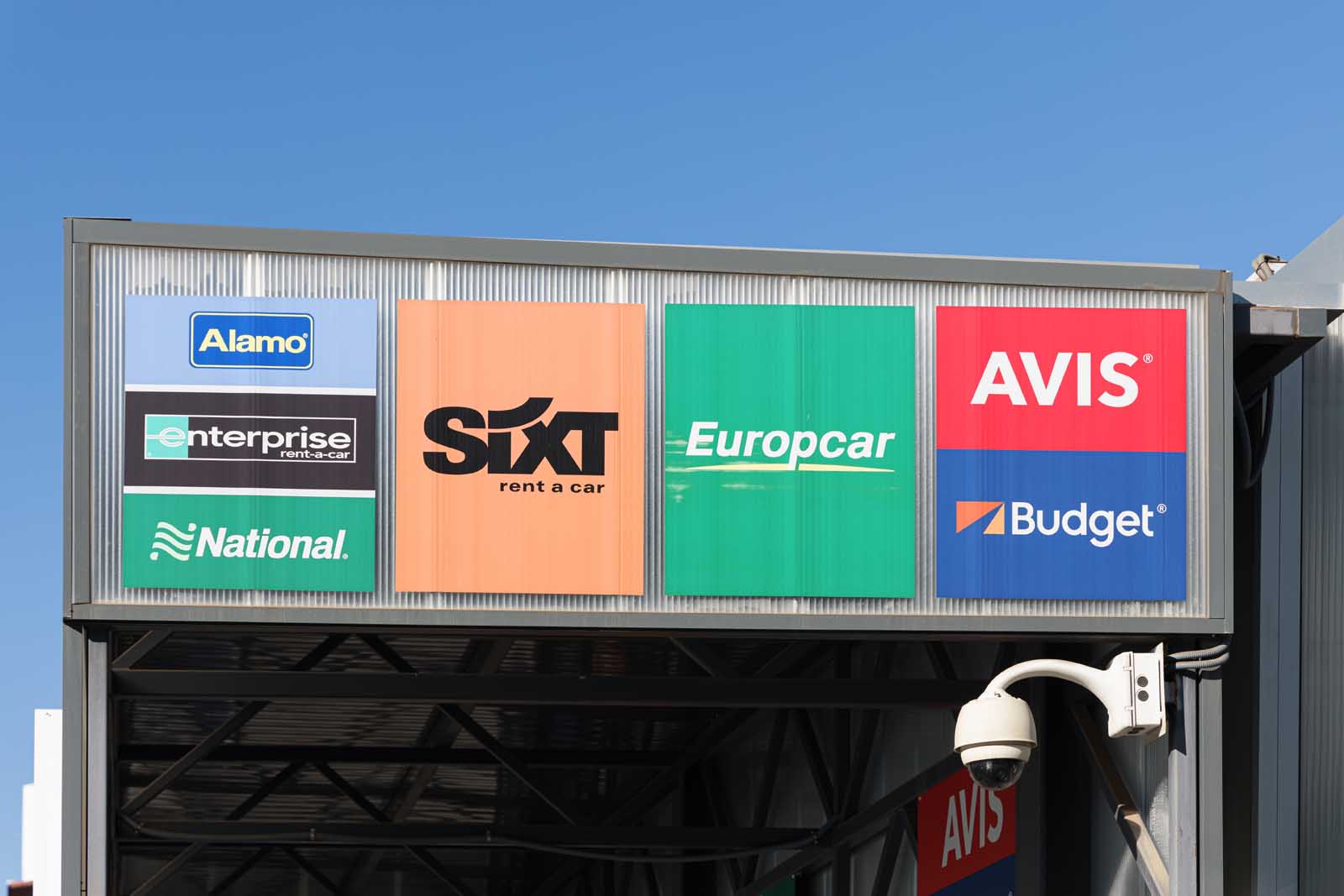
As your journey comes to an end, it’s time to return your rental car. This can often be the most stressful time of the whole vacation. To avoid the additional cost of an extra rental day, ensure to return the rental car punctually as there is typically only a 30-minute grace period provided.
Upon the rental car’s return, make sure to do your own inspection. Depending on the rental agency or even the time you return it, they may not go over anything with you. If possible, try to inspect with an attendant to verify that no new damages have occurred; taking photos can serve as evidence of the vehicle’s condition. The final rental price will be determined upon return, comprising the initial rental rate plus any additional fees for insurance, fuel, road taxes, tolls, and parking.
Most of the time, if you are renting at an airport, they go over everything, present you with the bill and you pay right on the spot.
Returning to the Right Spot: Airport Locations and City Returns
After your Spanish adventure, you’ll need to return your rental car to the specified location, whether at an airport or city center. Rental car suppliers typically offer pickup and drop-off services at both airport desks and several city center locations for added convenience. Make sure to return your rental car to the location specified in your rental agreement, which may include various airport or city center locations in Spain.
The option to rent a car and pick up and drop off rental cars at different car rental locations can be convenient and cost-effective for travelers, especially when using a reliable car rental company. Just make sure you know if there is an additional cost added before you drive off of the lot.
No Surprises: Understanding Additional Fees
To avoid any unpleasant surprises, it’s essential to understand potential additional fees. We usually get the full coverage, so we have a worry-free rental. But you should always request a copy of the final condition report when returning the vehicle and retain this documentation until credit card charges can be verified. This is a good thing to do as it can really help if you need to dispute any unexpected fees or charges.
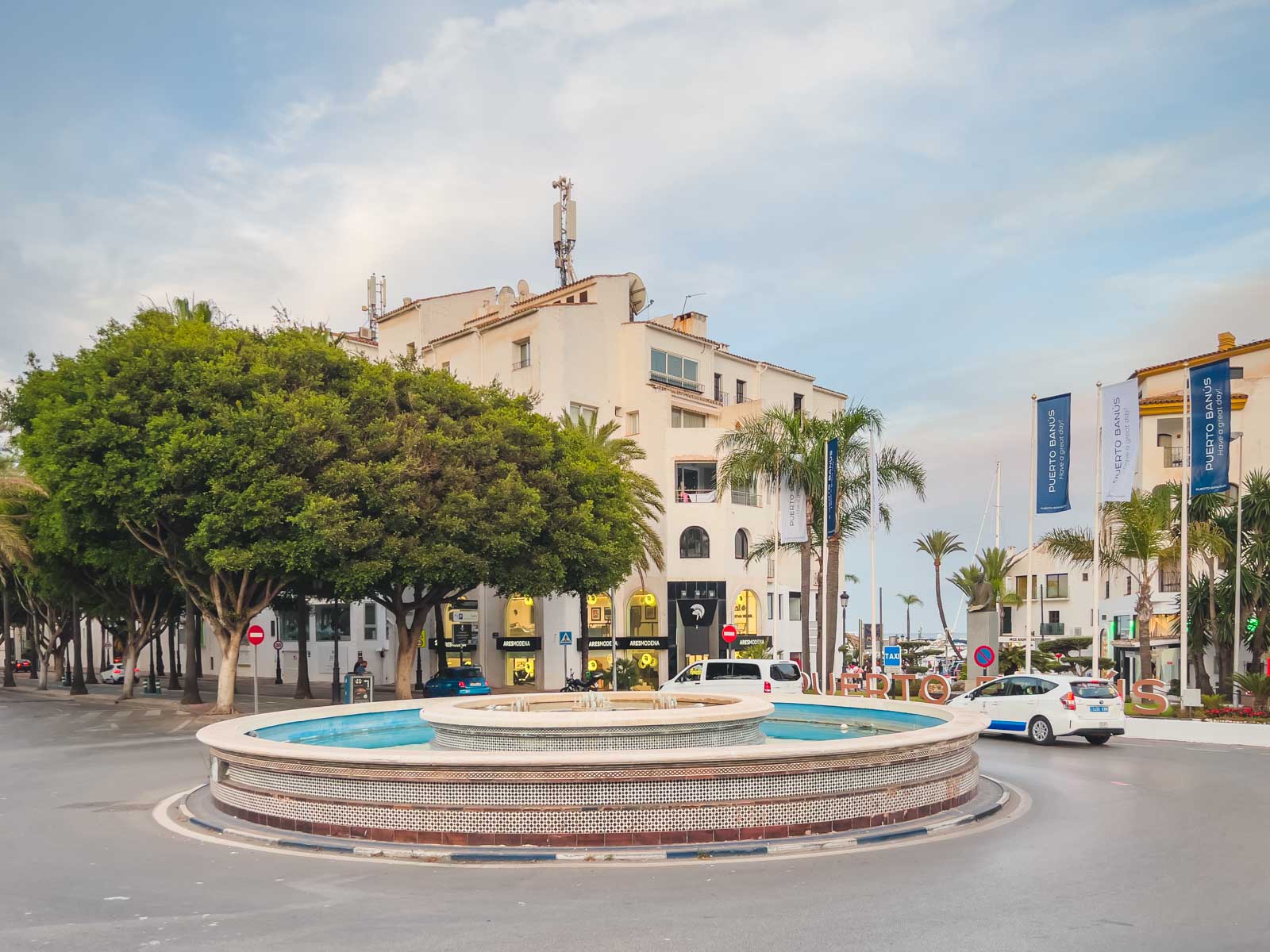
Renting a car in Spain offers a unique opportunity to explore the country’s diverse landscapes and cultures at your own pace. From selecting the perfect rental car to understanding local driving laws, parking smartly, and managing fuel needs, every step of the journey offers its own set of adventures. With careful planning, awareness of potential additional fees, and a spirit of exploration, your Spanish road trip can be an unforgettable experience. So, pack your bags, book your car, and hit the Spanish roads!
Frequently Asked Questions
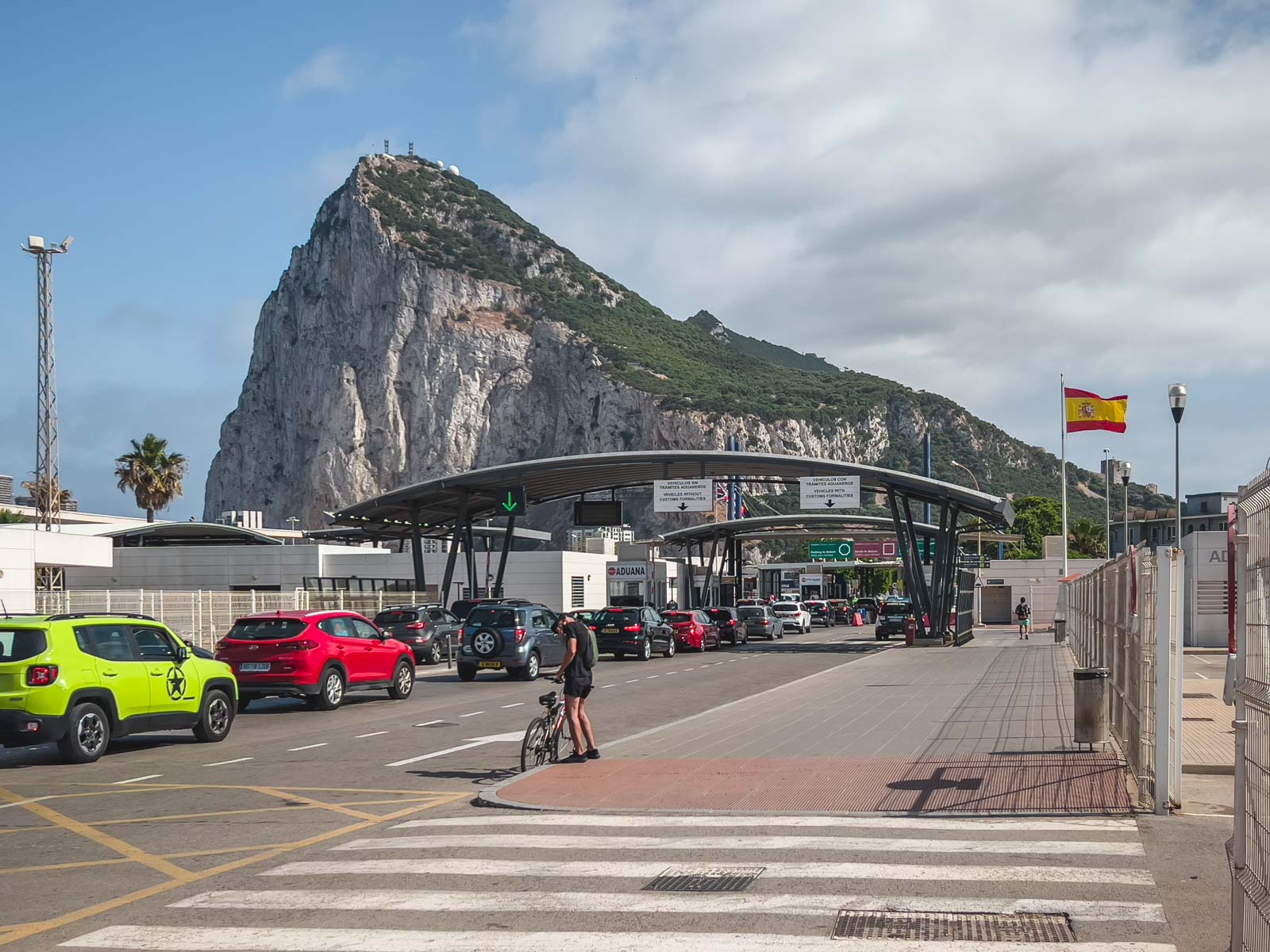
What are the age requirements for renting a car in Spain?
You need to be at least 21 years old to rent a car in Spain, though some companies may require you to be 23 or older. Drivers under 25 may also face an extra surcharge.
What is the speed limit on Spanish roads?
The speed limit on Spanish roads varies by road classification. Dual carriageways and motorways have a maximum speed limit of 120 km/h, while on other roads it’s typically 90 km/h, and in built-up areas, it’s 30 km/h. So, be sure to keep an eye out for the specific limits based on the type of road you’re on.
Should I choose a diesel or petrol car for my road trip in Spain?
It’s important to consider your travel plans and budget when choosing between diesel and petrol cars for your road trip in Spain. Diesel vehicles are often seen as cost-effective due to lower fuel prices and better fuel economy, but weigh the options based on your specific needs.
Where should I park my rental car in Spanish cities?
You should park your rental car outside the center of Spanish cities and use public transport to avoid fines and theft. It’s safer and more convenient.
What should I do if my rental car is towed?
If your rental car is towed, look for a sticker with the car’s location and then go to the designated locations to pay the fine and towing charges.

